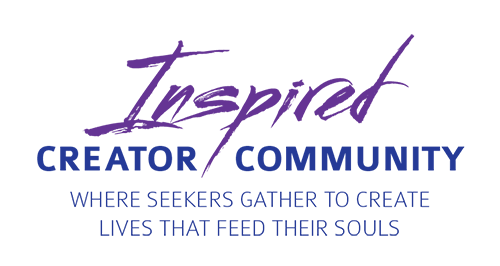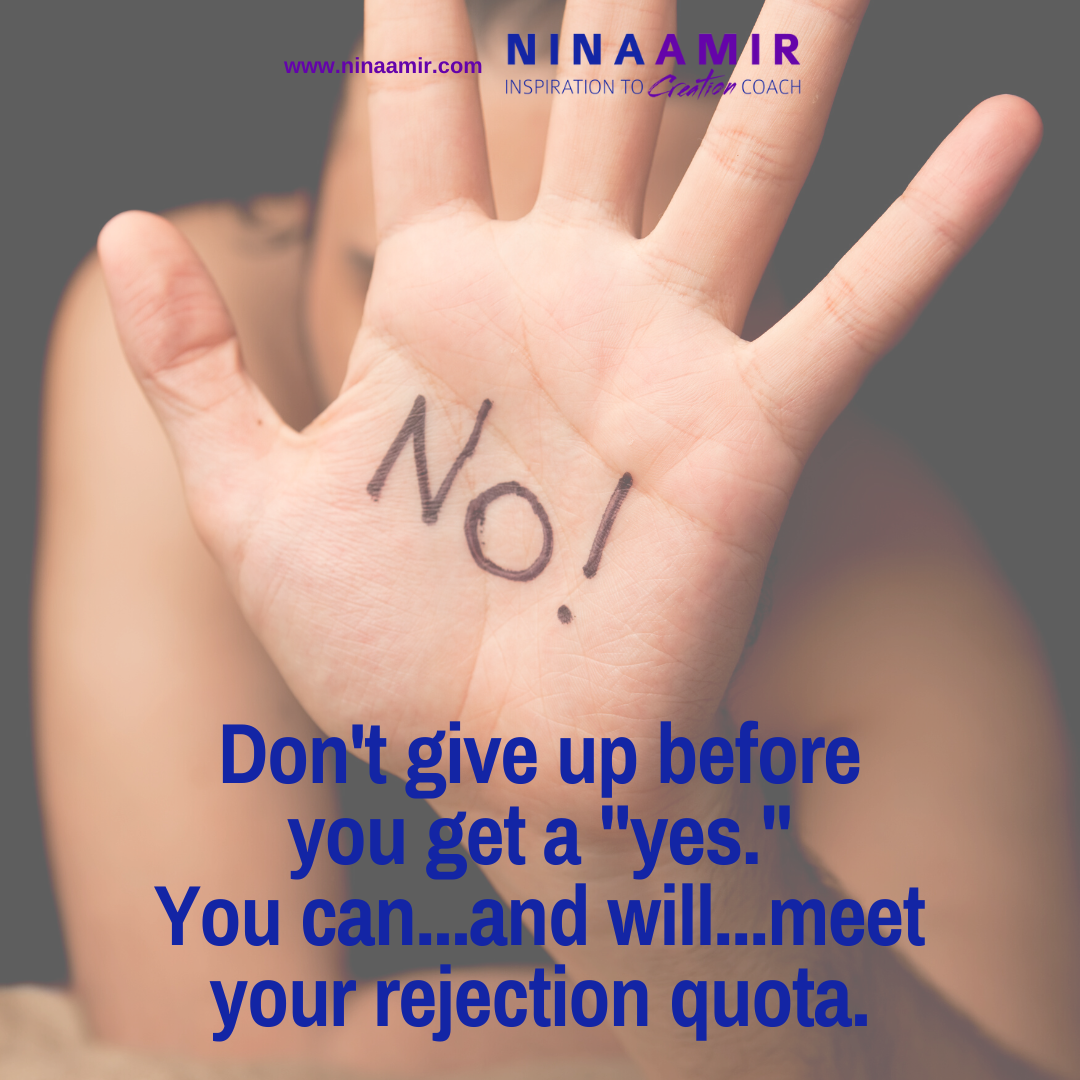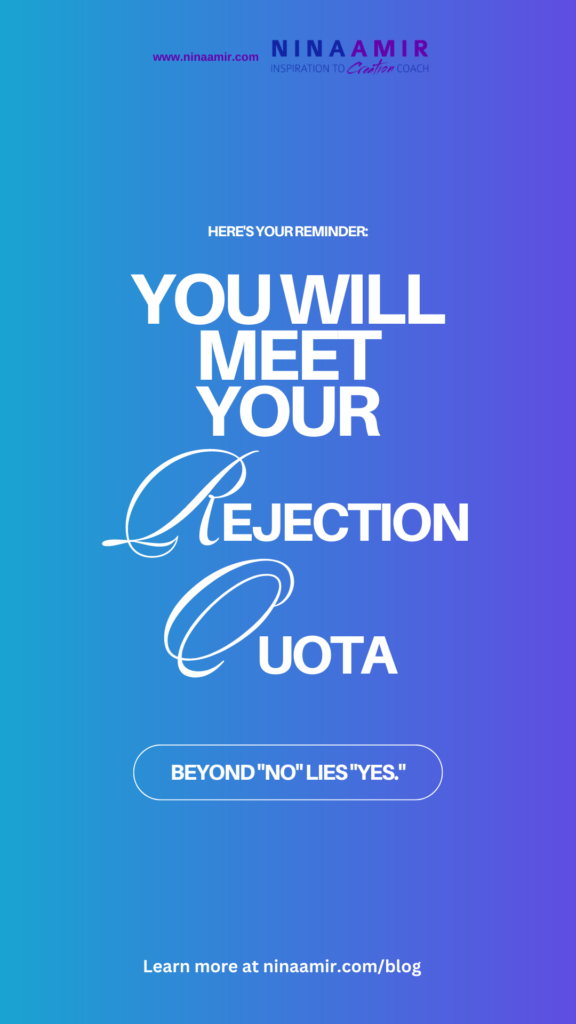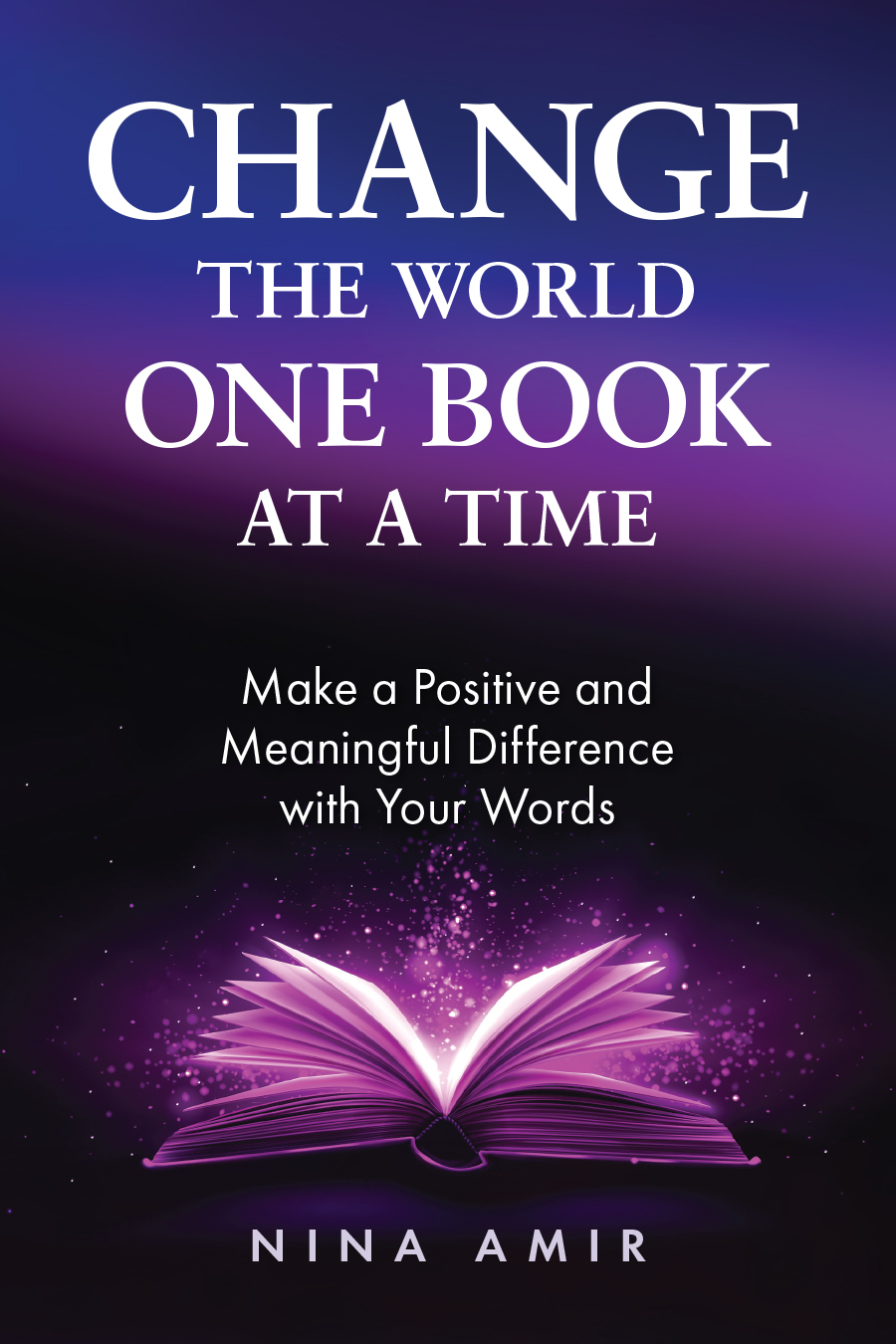Most people do whatever they can to avoid rejection, and it’s no wonder. Rejection hurts. Literally, your brain reacts to being told “no” as if you were physically injured.
Who wants that pain? Not me.
The topic of rejection has been on my mind lately as I move toward the completion of a book proposal and prepare to find a new literary agent to represent my work and me. But, unfortunately, the life of a writer—or any artist—is fraught with rejection. In fact, it’s typical to get a lot of “no” responses before you get a “yes.”
I’m not looking forward to that…or hearing “no” many times before I meet my “rejection quota.”
And it’s no wonder that many artists give up before getting the “yes” they want and need.
Rejections and Positive Thinking
Most manifestation strategies include some form of positive thinking. As a Law of Attraction coach and student of conscious creation, I know this well. But it can seem almost impossible to keep my mind focused on acceptance when I send out query letters.
This difficulty in focusing on getting a positive response goes back to brain science. It’s your brain’s job to stop you from doing anything harmful or dangerous—rejection falls into that category even if an agent’s form-letter declining representation doesn’t cause physical harm. Remember, rejection hurts even if it doesn’t threaten your life. Thus, your brain doesn’t want you to try something that might end in rejection.
Besides artists, salespeople know how difficult it is to remain positive in the face of rejection. And those that can stay positive, committed, and inquisitive about negative responses are more likely to lessen their pain level and get more acceptance overall. The same could be said for those dating, fundraising, or selling vacuum cleaners door to door.
Your Rejection Quota
With rejection on my mind, I started reading Jia Jiang’s book Rejection Proof. He takes on a 100-day rejection challenge and learns many things about rejection—and getting accepted—in the process.
My ears perked up when his book turned to artists and rejection. He focused specifically on writers rejected numerous times.
- J.K. Rowlings was rejected 12 times before selling Harry Potter.
- Stephen King was rejected 80 times before selling Carrie.
- Jack Canfield and Mark Victor Hansen were rejected 134 times before selling Chicken Soup for the Soul.
- C. S. Lewis was rejected 800 times before selling The Chronicles of Narnia.
- Margaret Mitchell was rejected 38 times before selling Gone With the Wind.
That’s a lot of rejection…and a lot of pain. But these authors, like other artists and sales professionals, were tenacious. They refused to give up and remained committed to getting their work into the world…despite the number of times they were rejected and any associated discomfort.
According to Jiang, rejection has a “number.” Each person must reach that number before they receive a “yes.” And that number differs for each person—as evidenced by the author’s rejection numbers.
Jiang’s claim reminded me of a concept called a “rejection quota.” I learned about rejection quotas long ago, which is basically the same idea. You must reach your rejection quota before gaining the acceptance you want. Hit your “no quota,” and you start hearing “yes.”
How do you know your number or quota? You discover it when you get your first “yes.” If you haven’t gotten an acceptance yet, you haven’t reached your quota.
How to Reach Your Rejection Quota
So how do you keep asking for what you want until you meet your rejection quota—and do so despite the pain of rejection? I could say, “Suffer through the rejections,” and that statement would have validity.
However, some strategies can help you change your mindset around rejection. As a result, you’ll hear “no” with less pain and discomfort and get your brain on board as well. Hopefully, you’ll also get to “yes” faster.
You haven’t lost anything.
I once heard Canfield offer some great advice about rejection. He told a room full of writers: Imagine you are at a school dance, and you want to ask someone across the room to dance with you, but you are afraid you will get rejected. Suppose you avoid that “no” by not walking across the room and posing the question. In that case, you are still in the same situation. Nothing has changed. You still have no one with whom to dance. But if you walk across the room and ask someone to dance, and they decline your offer, what then? Nothing is different. Your circumstance has not changed. You still are sans a dance partner.
Simply said, you lose nothing if you ask and get turned down…but you might gain acceptance by making that effort.
The other thing he said—since he was talking to a group of writers—was this: If you send a query letter to an agent or editor and it is rejected, just tell yourself, “I must have sent it to the wrong person. I’ll send it to the correct person next time.”
You can apply this same strategy to an unsuccessful cold call, request for funding, blind date, or attempt to sell your coaching services. The person who said “no” is the wrong person for you. The right person is out there; you must find and ask them.
It’s not about you.
Remind yourself that when someone declines your request, their response likely has nothing to do with you. Instead, it’s all about them.
That’s why coaches tend to deep dive into what stops someone from signing up for coaching and try to get them over that hurdle. It’s not the coaching program or the coach that’s the problem; the person’s internal dialogue, negative beliefs, or fears stop them from signing up on the spot.
When you realize rejection is not about you, continuing your attempt to get acceptance becomes easier.
I realize that in many cases, it seems as if the rejection is about you…but it’s not. Really. It’s about the other person.
Believe in what you are “selling.”
Whether you are selling yourself (as a coach, romantic partner, or job applicant) or a product or service, you must believe in it 100%. If you don’t, others sense your doubt or lack of confidence.
Plus, when you have confidence in what you want someone to accept (or buy), it’s easy to talk about it in a way that excites others. Then, getting to “yes” becomes more likely.
To a great extent, this advice entails knowing your value and the value of whatever you are selling or want someone to do. When you are confident in that value, others feel that confidence.
And if you value your value, so will others. This comes in handy if the “yes” you desire has to do with a raise in salary or getting someone to agree to hire you, for example.
Remain optimistic.
Optimism is powerful. It makes you tenacious and committed because you are convinced you will get a “yes”—if only you ask for it enough times. And although optimists are sometimes deemed unrealistic, their positive mindset keeps them believing that anything is possible…even reaching a rejection quota.
To increase your level of optimism, try some well-loved affirmations before you make your subsequent request, like “It gets to be easy” or “100% possible, 100% of the time.” Then, see if declaring that often and with emotion doesn’t help you approach each request with more positive energy.
Be prepared for your brain to offer up negative mental chatter. For example, it might say, “You’ll just get rejected again, so why bother trying,” “No one wants what you are selling,” or “You aren’t good enough to get a ‘yes.’”
When that happens, shut down your brain with a polite “Thanks, but I’ve got this. Rejection won’t kill me.” Indeed, it won’t. And you can control your mental chatter if you want to get to “yes.”
Get curious.
Curiosity often turns a “no” into a “yes.” So, when you don’t get the desired response, ask the person why they chose to decline. Their answers may lessen the pain of rejection.
Also, ask—or tell—people why you are asking them to accept your offer or request. We all want to know why someone is asking us to do something, and if the reason is compelling (and sometimes even if it isn’t), we are more likely to comply with the request.
I remember these strategies each time I speak with a potential client or Inspired Creator Community member. And you can bet I’ll use them as I embark on my literary agent search.
What about you? Do you have strategies to help you meet your rejection quota and get to “yes”? Tell me in a comment below. And please share this post with a friend or on social media.
If you want to increase your ability to create desired results—like meeting your rejection quota, let’s chat. Get on my calendar here. Or join the Inspired Creator Community for group personal and spiritual growth coaching every month. It’s in this community that real transformation happens…
 It’s time to transform, is it not? Join the Inspired Creator Community. As a member, you will discover how to change from the inside out. Finally, be the person who does the things that allow you to create what you desire. Gain access to intuitive transformational coaching, world-class Certified High Performance Coaching, and strategies for living a life that feeds your soul. As you will discover, you are a powerful creator. It’s time to create what you want. Join now!
It’s time to transform, is it not? Join the Inspired Creator Community. As a member, you will discover how to change from the inside out. Finally, be the person who does the things that allow you to create what you desire. Gain access to intuitive transformational coaching, world-class Certified High Performance Coaching, and strategies for living a life that feeds your soul. As you will discover, you are a powerful creator. It’s time to create what you want. Join now!Photo courtesy of Jesse Bowser.




